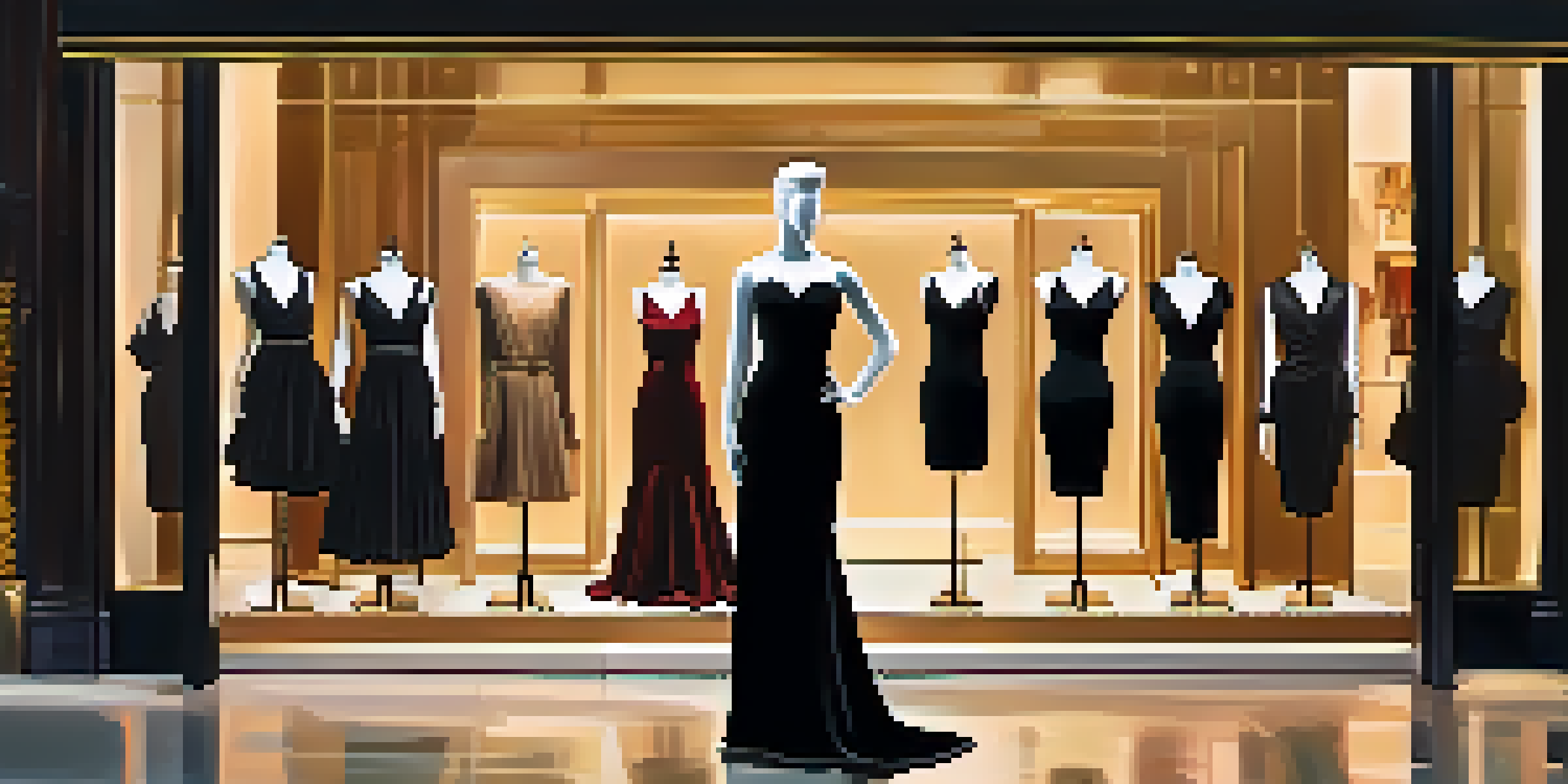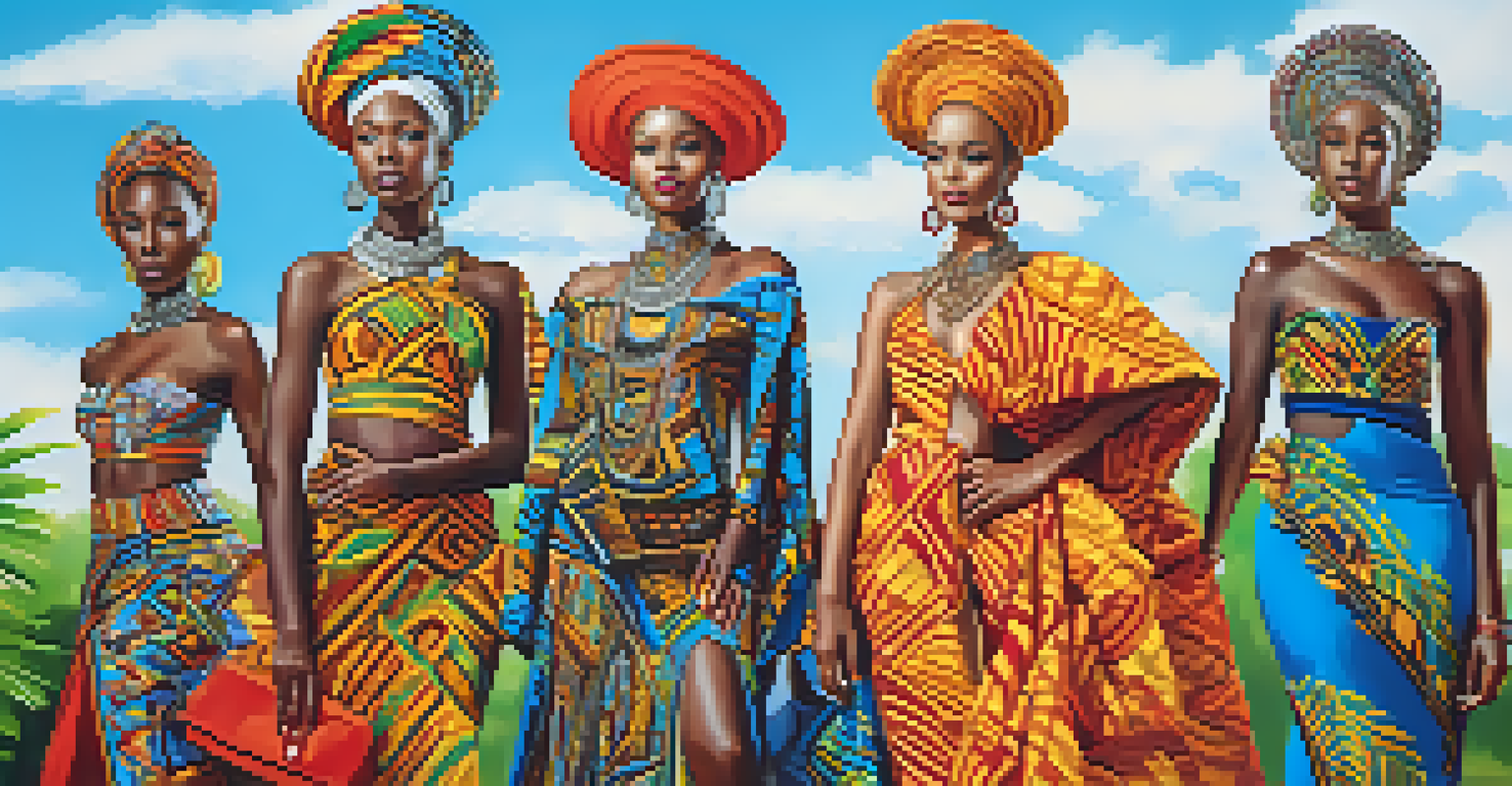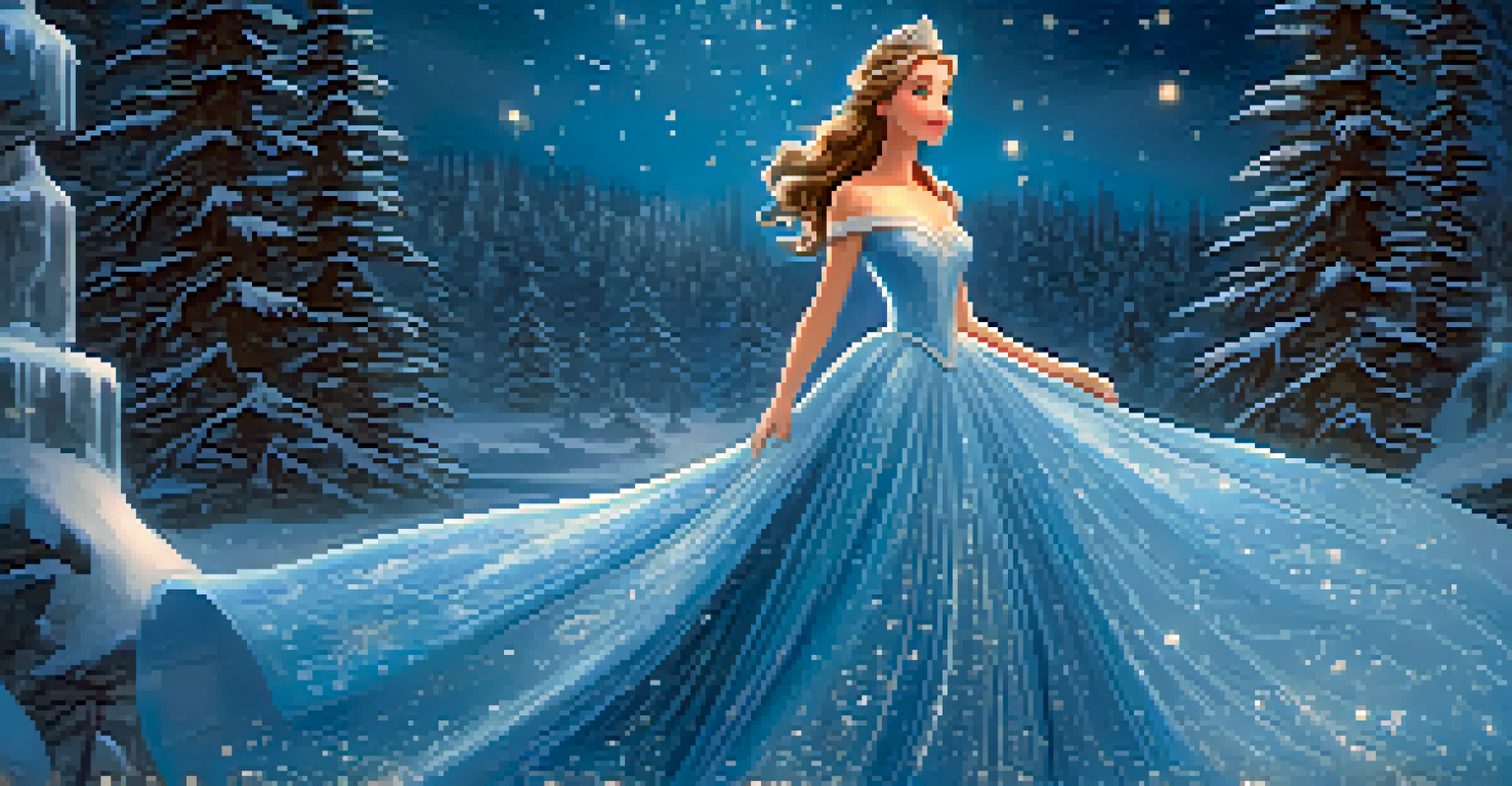Fashion as a Character: Iconic Outfits in Film History

The Power of First Impressions in Costume Design
In film, the first impression often comes from a character's outfit. Think of how a superhero's sleek suit can convey strength, while a vintage dress might suggest nostalgia. Costumes help to establish personality, background, and even the emotional arc of a character right from the start.
Fashion is the armor to survive the reality of everyday life.
For instance, when we see Holly Golightly in her little black dress from 'Breakfast at Tiffany's,' we immediately grasp her elegance and complexity. This initial visual cue sets the tone for her journey throughout the film. Fashion transcends mere aesthetics; it becomes a vital storytelling tool.
Ultimately, a well-crafted outfit can tell us more about a character than a monologue. It’s a silent yet powerful introduction to who they are, making costume design an essential part of filmmaking.
Timeless Trends: The Influence of Iconic Films
Certain films have left an indelible mark on fashion trends, shaping the styles of entire generations. Movies like 'Grease' popularized leather jackets and poodle skirts, while 'Clueless' gave us the iconic plaid ensembles. These outfits not only defined characters but also influenced real-world fashion choices.

When we see Cher Horowitz's wardrobe, it’s hard not to think of the ’90s fashion revival that followed. The film's stylist, Mona May, created a look that resonated with young audiences, making the characters’ outfits instantly recognizable. This effect shows how film can bridge the gap between fiction and reality.
Costumes Define Character Identity
Costumes not only establish a character's personality and emotional journey but also serve as a vital storytelling tool in film.
As a result, cinematic fashion often inspires designers and trends long after the credits roll. The powerful connection between film and fashion continues to shape style movements today.
Fashion and Identity: Characters Who Break the Mold
Film characters often use fashion to explore and express their identities, especially those who defy societal norms. Take David Bowie’s Ziggy Stardust, for example; his flamboyant outfits challenged traditional gender norms and redefined masculinity in the 1970s. Through bold clothing choices, characters can make powerful statements about their identities.
Clothes mean nothing until someone lives in them.
Similarly, in 'The Devil Wears Prada,' Andy Sachs undergoes a transformation that highlights the role of fashion in self-discovery. As she evolves from a frumpy intern to a stylish powerhouse, her outfits reflect her growing confidence and ambition. This journey illustrates how fashion can be intertwined with personal growth.
Ultimately, these characters remind us that clothing can be a form of self-expression. Fashion becomes a canvas where identity can be painted, allowing characters to break free from societal constraints.
Cultural Impact of Fashion in Film: A Global Perspective
Fashion in film also serves as a mirror to cultural shifts and societal changes. For instance, the vibrant attire in 'Black Panther' not only showcases African heritage but also celebrates cultural pride and innovation. The film's costume designer, Ruth E. Carter, received accolades for blending traditional African styles with modern aesthetics.
Moreover, films like 'Crazy Rich Asians' highlight the opulence and extravagance of a culture through fashion, making it a central theme. The stunning outfits in these films do more than just dazzle; they tell stories about heritage, wealth, and identity. Fashion becomes a means of celebrating culture on a global stage.
Fashion Influences Cultural Trends
Iconic films have the power to shape fashion trends, influencing styles and inspiring designers long after their release.
This cultural narrative shows how film fashion can transcend borders, fostering appreciation for diverse styles. It not only entertains but also educates audiences about different cultural backgrounds.
Fashion as a Symbol of Power in Cinema
In many films, clothing serves as a powerful symbol of authority and control. Think of the sharp suits worn by characters like Miranda Priestly in 'The Devil Wears Prada' or the tailored outfits of the characters in 'The Godfather.' These outfits embody power dynamics that are crucial to the storyline.
For instance, Miranda’s impeccable fashion choices communicate her dominance in the fashion world. Her wardrobe is a visual cue that elevates her status and reinforces her role as a formidable leader. Such characterizations show how fashion can be synonymous with power.
Ultimately, these representations challenge the notion that fashion is merely superficial. Instead, they reveal the intricate relationship between clothing, character, and the authority they wield in their respective narratives.
The Role of Fashion in Comedy: Humor Through Style
Fashion in comedy films often plays a crucial role in enhancing humor and character quirks. Think of the outrageous outfits in movies like 'Dumb and Dumber,' where the characters’ garish costumes become a source of laughter. The absurdity of their fashion choices elevates comedic moments and makes them memorable.
In 'Bridesmaids,' the mismatched dresses worn by the bridal party further amplify the film's comedic tone, showcasing how fashion can enhance storytelling. These outfits not only serve as visual gags but also reflect the characters' personalities and relationships.
Fashion as Power in Film
Clothing often symbolizes authority and control in cinema, illustrating the intricate relationship between fashion and character dynamics.
Through these examples, we see that fashion can be a tool for comedic expression. It allows filmmakers to create laugh-out-loud moments while adding depth to character interactions.
The Evolution of Fashion in Animation: A Unique Medium
Animation offers a unique canvas for fashion, allowing for limitless creativity in character design. Iconic animated films like 'The Incredibles' and 'Frozen' showcase how outfits can define character traits and story arcs. The designs often reflect the characters' personalities, from the sleek suits of superheroes to the majestic dresses of princesses.
For example, Elsa’s ice-blue gown in 'Frozen' not only signifies her journey of self-acceptance but also becomes an icon in its own right. The gown’s transformation scene is a pivotal moment that showcases the fusion of fashion and narrative in animation.

As animation continues to evolve, so do its fashion choices, often pushing the boundaries of style and design. This medium allows for imaginative interpretations of clothing that can resonate deeply with audiences of all ages.